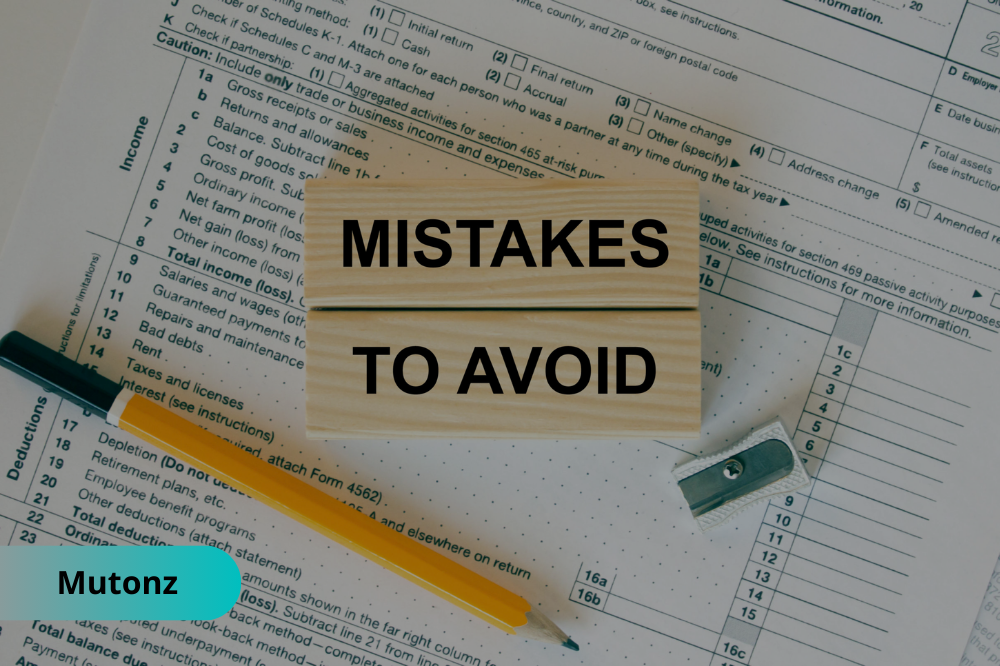Tax season can feel overwhelming, especially when a simple mistake can lead to delays, missed refunds, or even penalties. Whether you're filing your taxes yourself or seeking help, awareness of common pitfalls can save you time and money.
This guide breaks down eight mistakes people frequently make when doing their taxes—and how to avoid them. By the end of this post, you'll feel better prepared to file confidently and accurately.
1. Not Having All Your Paperwork in Order
Before you start filing, gather all the necessary documents. Missing paperwork, like W-2s, 1099s, or receipts for deductions, is a recipe for mistakes. The IRS makes decisions based on the forms they’ve received from your employers and financial institutions. If you leave something out, it may raise red flags or delay your return.
How to avoid this mistake:
- Use a checklist to track what you need (e.g., income forms, investment statements, and receipts for charitable donations).
- Keep all your documents in one place throughout the year to avoid scrambling come tax season.
2. Math Errors
Math errors are common when filing taxes and can lead to inaccuracies that delay refunds or even an IRS audit. If you’re calculating numbers manually, it’s easy to make a misstep.
How to avoid this mistake:
- Double-check all your calculations before submitting your return.
- Take advantage of tax software or tools that automatically handle the math for you.
3. Using the Wrong Filing Status
Your filing status determines your eligibility for certain credits, deductions, and the tax rate applied to your income. Choosing the wrong category—like “single” instead of “head of household”—can result in paying more taxes than necessary or missing out on benefits.
How to avoid this mistake:
- Review IRS guidelines to determine your correct filing status (e.g., single, head of household, married filing jointly, married filing separately).
- If unsure, consult a tax professional for guidance.
4. Messing Up with Tax Credits and Deductions
Not claiming the credits and deductions you’re eligible for—or worse, claiming ones you’re not entitled to—is a common tax mistake. For example, missed opportunities like the Earned Income Tax Credit (EITC) or Child Tax Credit can cost you money. On the flip side, incorrectly claiming deductions can trigger an IRS inquiry.
How to avoid this mistake:
- Study available credits and deductions, such as medical expenses, education credits, and retirement savings contributions.
- Use tax software or consult a professional to help identify credits and deductions that apply to your situation.
5. Passing Up the Chance to Max Out Your IRA
If you’re contributing to an IRA (Individual Retirement Account), you could reduce your taxable income. Unfortunately, many people forget to take advantage of this opportunity even though it could improve both their retirement and tax situation.
How to avoid this mistake:
- Contribute the maximum allowed amount to your IRA for the year before the filing deadline.
- Consult your financial advisor to learn how IRA contributions can reduce your tax bill.
6. Entering the Wrong Information
Typos and small errors—like incorrect Social Security Numbers (SSNs), misspelled names, or wrong bank account details—are more common than you think. These errors can delay your refund or result in a rejected tax return.
How to avoid this mistake:
- Carefully double-check all entries, especially SSNs and account numbers.
- Have a trusted friend or family member review your return before submitting it.
7. Not Telling the IRS What to Do with Your Refund
If you’re owed a refund but fail to provide proper instructions, the IRS may issue a paper check instead of a direct deposit, delaying access to your money. Or worse, the refund might go to the wrong account if there’s a mistake in your bank details.
How to avoid this mistake:
- Opt for direct deposit and provide accurate banking information to receive your refund faster.
- Split your refund into multiple accounts if needed (e.g., savings and checking) by using IRS Form 8888.
8. Not Signing and Sending Your Return
This might sound obvious, but an unsigned or unsubmitted tax return is invalid. It’s surprisingly easy to overlook signatures when rushing to meet the deadline.
How to avoid this mistake:
- If you’re filing a paper return, double-check that all required fields, including signatures, are complete before mailing.
- For electronic filings, ensure you submit your return after reviewing it. Tax software typically provides confirmation emails for submitted returns.
File with Confidence
Filing your taxes accurately is crucial for maximizing your return and avoiding fines. By steering clear of these eight common mistakes—like math errors, missed deductions, or incorrect filing statuses—you’ll set yourself up for success.
Need a little extra help? Tax software or experienced professionals can make tax season much less intimidating. Take the time to review your documents carefully, and remember that preparation is your best tool for a stress-free filing experience.



 Age Limits for Children’s Bank Accounts: What Parents Need to Know
Age Limits for Children’s Bank Accounts: What Parents Need to Know  The Impact of Artificial Intelligence Advancements on the Financial Lives of Americans
The Impact of Artificial Intelligence Advancements on the Financial Lives of Americans  International Student Loans in Canada: Your Complete Guide <p style=' font-weight: normal;font-size: 16px !important; text-align: center;'> Discover eligibility, uses, and tips for securing funding for your studies. </p>
International Student Loans in Canada: Your Complete Guide <p style=' font-weight: normal;font-size: 16px !important; text-align: center;'> Discover eligibility, uses, and tips for securing funding for your studies. </p>